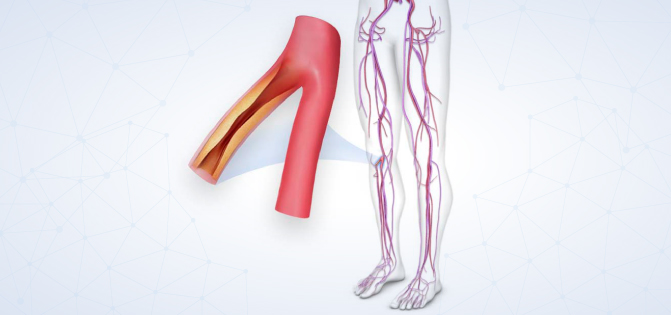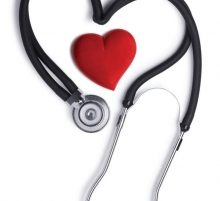
Most people often fail to recognize symptoms of vascular disease. Unfortunately, so do their doctors.
“The knowledge gap between heart disease and vascular disease among the public and health care providers is quite dramatic,” said American Heart Association President Mark Creager, a cardiovascular disease specialist.
Hoping to bridge that gap, a group of leading experts on vascular disease met Thursday in a Boston summit to discuss the broad series of common illnesses that alter the function of arteries and veins. They discussed ways to boost awareness and knowledge of these common vascular diseases among patients and doctors, as well as within the broader health care community.
“There have been such tremendous advances in biology and technology. There are a lot of novel therapies in place to prevent and treat vascular diseases. You’re all aware of this, but the public in general and many health care providers are not,” Creager told the group as he opened up the conference. “We need to find a way to improve this public awareness and make sure we’re educating the public, patients and health care providers, and also making sure the actions they’re taking are ending up improving quality of life and reducing the mortality of our patients.”
William Hiatt, a University of Colorado School of Medicine professor, described vascular diseases and disorders as “a bit of a stepchild to coronary disease and stroke” but expressed optimism that “now we’re sort of coming into our own.”
“Primary care physicians have a lot on their plate today,” said Creager, “They’re dealing with so many medical issues that sometimes it’s hard for them to recognize when a patient is at risk for vascular disease or already has it, and they should. If they’re not sensitive to it or focusing on it, they’re going to miss the signs.”
Most doctors get little training about vascular disease, especially compared to other topics they are taught in school, said Creager, director of the Heart and Vascular Center at the Dartmouth-Hitchcock Medical Center.
“As a result, they have a less sophisticated understanding of vascular diseases, how to diagnose them, what the implications are and how to treat them,” he said.
That delay in diagnosis, and treatment, can have devastating consequences. Among those speaking at the summit will be patients and their family members who will recount personal tragedies about what can happen when physicians fail to recognize symptoms, Creager said.
Those with limited understanding about vascular disease sometimes see it as a condition that only affects certain limbs – like a blood clot in the leg – but vascular disease is rarely restricted to one area of the body.
“Plaque build-up in their legs, the problem that causes peripheral artery disease, typically affects arteries all over, including those in the heart and those that go to the brain,” Creager said. “So if someone has peripheral artery disease, they’re at significant risk for a heart attack or stroke if they don’t start addressing the problem.”
He added: “A clot in the vein of the leg may travel through the heart to the lungs, causing a pulmonary embolism, which might be fatal.”
The summit, which will convene leading cardiologists, vascular specialists, cardiologists, clinical scientists, patients and health organizations, will be the first for the AHA, although other organizations, such as the Vascular Disease Foundation, have worked on similar awareness campaigns in the past.
The AHA’s summit will limit its scope to peripheral artery disease, aortic and peripheral aneurysms, and venous disease, primarily venous thromboembolism.
Peripheral artery disease is now recognized as one of the most common and dangerous of all cardiovascular diseases. It affects 8 million people in the country, with risk factors that include smoking, high blood pressure, and high cholesterol. Venous thromboembolism affects about 900,000 people, and it kills 60,000-100,000 people in the United States each year.
“All of us as health professionals, supported by the American Heart Association, have to do a much better job in informing every adult about the very high prevalence and truly dangerous short-term adverse outcomes of the common vascular diseases,” said Alan T. Hirsch, a vascular medicine specialist and cardiologist at the University of Minnesota, who will address public awareness gaps and opportunities at the AHA summit.
People are unfamiliar with the immense human risk and negative community impact associated with vascular diseases, he explained.
“There are lots of risks that are actively promoted to the public, and that consume most of our limited attention, such as Ebola, West Nile virus, or even Lyme disease,” he said. “These diseases seem to be core to major news stories, but they are, in reality not the true risk that affects nearly every American family. Vascular diseases are pandemic and kill daily in every city and town. This risk, and the opportunity to lower this risk, is the story that must be told.”
A good campaign starts by “creating simple, easy-to-understand, and compelling messages for the public” and ensuring that they are understood among all cultural groups, he said.
“An effective national vascular disease public awareness platform also requires continuous outreach to all health professionals, including physicians, nurse practitioners and physician assistants, nurses, pharmacists, and a range of other clinicians to assure that the vascular science that underpins effective vascular disease prevention, diagnosis and treatment are used to achieve measurable public health goals,” he said. “An informed public and an informed health professional work force obviously can make substantial improvements over short time frames. But, this action plan starts with providing accurate and actionable information.”
That’s where the AHA can provide a heavy lift.
“Look at what we’ve done for awareness of heart disease in women. We really raised the flag there,” Creager said, pointing to improvements in how women understand how heart disease presents differently among genders. “And the American Stroke Association is raising awareness for the risk factors of stroke, and what to do if symptoms stroke occur. That’s why we’re doing this for vascular disease, because the American Heart Association is so well positioned to make a difference.
“It will have impact, on the public, on the health care providers, on entire systems of care. That’s why we’re having the summit.”





